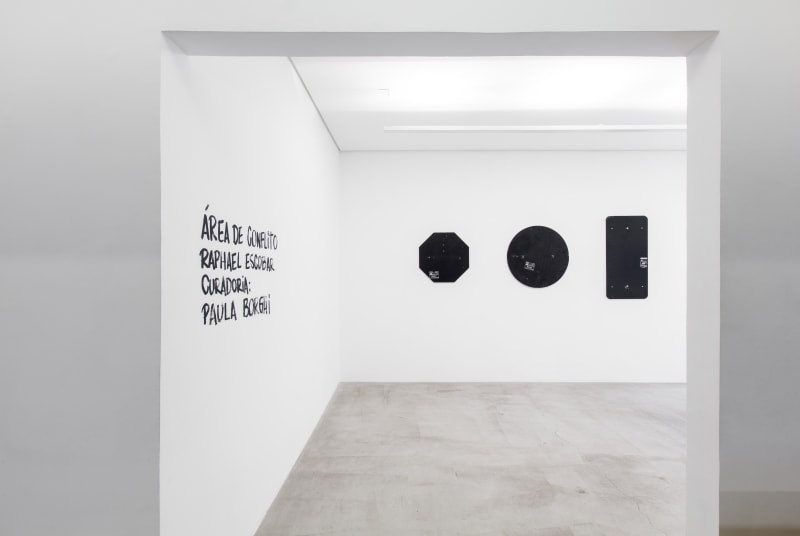Area of Conflict belongs to a subsystem of "General Control Signage" composed of marks, symbols and legends outlined on public thoroughfares. The purpose of these signs is to provide information that makes the population obey rules of conduct for the sake of safety and fluidity of societal norms.
The use of these signs is based on a usually image-oriented language system, with the intention of providing a simple and immediate message, that is, a message that is easily understandable regardless of the background or level of schooling of the person reading the codes in question.
The "General Control Signage" consists of a variety of shapes in the following colours: blue, yellow, white, red and black. The "Pedestrian Crossing", for example, is identified by its zebra appearance and may be found where there are traffic lights or not, where there is a significant volume of pedestrians. The Area of Conflict, meanwhile, is identified by the yellow diamond shapes that form a square, and is used to reinforce that stopping is prohibited in intersection areas.
In most cases, the "General Control Signage" suffices on its own, but in others, reinforcement by the so-called auxiliary devices is required. The most popular such devices are the security cameras and professionals. These, as well as performing surveillance, also have the power to impose fines when the rule is violated. For this to happen, these professionals are given the incentive of earning financial bonuses for each fine imposed - bonuses guaranteed by the bureaucracy. And when the offender is caught in the act, it's not rare for him to pay the penalty with a cuppa for the officer.
In any case, the signs have the objective of transmitting and guiding the users on the conditions of adequate use of the road, including prohibitions, restrictions and information that enables them to adopt a suitable behaviour, so as to organise the flows and, consequently, enhance safety. In the absence of such signs, one might suppose disorder, bad conduct and chaos on the roads. If this should occur, how would such consequences alter, in a broader sense, the disciplinary system which intends to regulate?
Paula Borghi, 2013

